
In the world of additive manufacturing, 3D printing has emerged as a transformative technology capable of producing complex and customized parts with ease. One of the pioneering 3D printing techniques is Multi Jet Fusion (MJF), developed by HP, which offers rapid and cost-effective production of high-quality parts. Despite its many advantages, MJF parts can sometimes exhibit a rough surface finish, which may not be suitable for all applications. To address this limitation, vapor smoothing has emerged as a powerful post-processing technique for improving the surface finish of 3D printed parts, including those manufactured using MJF technology. In this comprehensive article, we will delve into the world of vapor smoothing of MJF 3D printed parts, exploring its techniques, advantages, applications, materials, safety considerations, and future perspectives.
Understanding MJF 3D Printing
Multi Jet Fusion (MJF) is an advanced 3D printing technology developed by HP that combines thermal energy and an inkjet array to fuse polymer powder together to build three-dimensional objects. The process starts by selectively depositing fusing and detailing agents on a layer of polymer powder. Then, thermal energy is applied to the entire powder bed, causing the fusing agent to absorb the energy and fuse the particles together, forming a solid layer. The detailing agent is used to define fine features and improve the overall resolution of the part. Layer by layer, the process continues until the 3D printed object is complete. MJF offers several advantages, such as high printing speed, excellent mechanical properties, and the ability to create intricate geometries with fine details. However, the surface finish of MJF parts may not always meet the stringent requirements of certain applications.
What is Vapor Smoothing?
Vapor smoothing is a post-processing technique used to enhance the surface finish of 3D printed parts, including those fabricated using MJF technology. The process involves exposing the printed part to a chemical vapor or solvent, which softens and melts the surface layer, resulting in a smoother and more uniform finish. Vapor smoothing effectively fills in the visible layer lines and irregularities commonly found in 3D printed objects, transforming a rough surface into a polished, glossy appearance. This technique not only enhances the aesthetics of the part but also improves its mechanical properties, making it a valuable addition to the 3D printing workflow.
Learn About Related Posts: The Define Of Vapor Polishing
Vapor Smoothing Techniques
Several vapor smoothing techniques can be applied to MJF 3D printed parts. The choice of technique depends on factors such as the desired finish, material compatibility, safety considerations, and equipment availability. Here are some common vapor smoothing techniques:
- a. Acetone Vapor Smoothing: Acetone vapor smoothing is one of the most widely used techniques for smoothing MJF parts. Acetone is a common solvent that can effectively dissolve certain thermoplastics like ABS (Acrylonitrile Butadiene Styrene) and some PLA (Polylactic Acid) variants. The process involves placing the MJF part in a container and exposing it to acetone vapors. The vapors interact with the surface, softening the outer layer and causing it to fuse together, resulting in a smoother finish.
- b. Isopropyl Alcohol (IPA) Vapor Smoothing: IPA vapor smoothing is another popular technique for MJF parts. IPA is a milder solvent compared to acetone, making it suitable for certain PLA and ABS materials. The process involves placing the printed part in a sealed container with a small amount of IPA. The vapors interact with the surface, softening it, and facilitating the fusion of the outer layer, leading to a smoother finish.
- c. Ethyl Acetate Vapor Smoothing: Ethyl acetate is a solvent that can be used for vapor smoothing some thermoplastics, including PLA and ABS. The process is similar to acetone and IPA vapor smoothing, involving exposure to ethyl acetate vapors in a controlled environment.
- d. Dichloromethane (Methylene Chloride) Vapor Smoothing: Dichloromethane is a potent solvent that can be used for vapor smoothing some thermoplastics, providing even smoother results compared to acetone or IPA. However, dichloromethane poses significant safety risks and should be handled with extreme caution.
- e. Specialized Vapor Smoothing Machines: Some companies have developed specialized vapor smoothing machines that can control the temperature, pressure, and exposure time of the vapor to achieve precise smoothing results. These machines can be particularly useful for industrial-scale production.
Each vapor smoothing technique has its advantages and limitations, and it is essential to choose the most appropriate method based on the material used and the desired surface finish.
Materials Compatible with Vapor Smoothing
Not all 3D printing materials are compatible with vapor smoothing techniques, as different materials respond differently to the smoothing process. Material compatibility largely depends on the chemical composition and thermal characteristics of the 3D printing material. Common 3D printing materials that are compatible with vapor smoothing include:
- a. ABS (Acrylonitrile Butadiene Styrene): ABS is a widely used thermoplastic material known for its durability and strength. It is compatible with acetone vapor smoothing and can produce smooth and glossy results.
- b. PLA (Polylactic Acid): PLA is a biodegradable and bioactive thermoplastic material commonly used in 3D printing. Some variants of PLA can be smoothed using IPA or ethyl acetate vapors.
- c. PA12 (Nylon): PA12, also known as nylon, is a strong and flexible thermoplastic material used in various industries. It is compatible with certain vapor smoothing techniques, depending on the specific formulation of the material.
- d. PETG (Polyethylene Terephthalate Glycol): PETG is a popular 3D printing material known for its toughness and transparency. While it may not respond as effectively to vapor smoothing as ABS or PLA, some formulations can still benefit from the process.
- e. PC (Polycarbonate): Polycarbonate is a high-performance thermoplastic with exceptional strength and temperature resistance. It may respond to certain vapor smoothing techniques, although it requires careful experimentation due to its unique properties.
- f. Other Thermoplastics: Some other thermoplastic materials used in 3D printing, such as HIPS (High Impact Polystyrene) and ASA (Acrylonitrile Styrene Acrylate), may be compatible with specific vapor smoothing methods.
It is essential to note that not all 3D printing materials can be safely smoothed using vapor techniques, and some materials may react unpredictably or even degrade when exposed to certain solvents. Before attempting vapor smoothing on any 3D printed part, it is crucial to conduct thorough testing to determine material compatibility and establish suitable process parameters.
The Vapor Smoothing Process in Detail
The vapor smoothing process involves several steps, from preparing the printed part to carrying out the smoothing procedure and post-processing. Let’s take a detailed look at each stage:
Step 1: 3D Printing the Part
The process begins with 3D printing the part using the MJF technology. The MJF 3D printer selectively deposits thermal energy and fusing agents onto a layer of polymer powder, causing the material to fuse and solidify, layer by layer, ultimately forming the three-dimensional object.
Step 2: Post-Processing Preparation
Once the 3D printing is complete, the part is removed from the build platform, and any excess powder is cleaned and removed from the surface. The part is then inspected for any visible defects or blemishes, as well as any remnants of support structures that may have been used during printing.
Step 3: Vapor Chamber Setup
Vapor smoothing requires a controlled environment, typically a vapor chamber. The vapor chamber is a sealed container that prevents the escape of chemical vapors and maintains a consistent vapor concentration. It should also include proper ventilation or exhaust systems to ensure safety.
Step 4: Preparing the Solvent or Chemical Vapor
The appropriate solvent or chemical vapor is selected based on the 3D printing material used and the desired smoothing effect. The solvent is placed in a shallow container within the vapor chamber, ready for vaporization.
Step 5: Vapor Exposure
The 3D printed part is carefully placed inside the vapor chamber, ensuring that it does not come into direct contact with the solvent. The solvent container is then heated, causing the solvent to evaporate and form vapor within the chamber. The vapor interacts with the surface of the part, causing the outer layer to soften and become more malleable.
Step 6: Smoothing Process Control
The key to successful vapor smoothing lies in precise control over the exposure time and temperature. The exposure time determines the degree of smoothing, while the temperature affects how effectively the solvent interacts with the material’s surface. Longer exposure times or higher temperatures can lead to a more pronounced smoothing effect.
Step 7: Drying and Curing
After the vapor exposure, the part is removed from the chamber and allowed to dry and cure in a well-ventilated area. This is necessary to evaporate any residual solvent and prevent contamination of the finished part.
Step 8: Final Inspection and Post-Processing
Once the part is dry and cured, a final inspection is carried out to verify the quality of the smoothing process. Any additional finishing touches, such as sanding or polishing, may be applied to achieve the desired surface finish.
Advantages of Vapor Smoothing MJF Parts
Vapor smoothing of MJF 3D printed parts offers numerous advantages, making it a compelling post-processing technique across various industries:
- a. Improved Surface Finish: The most apparent benefit of vapor smoothing is the significant improvement in the surface finish of MJF parts. It transforms the rough and grainy appearance of 3D printed objects into smooth, polished surfaces that rival the quality of injection-molded parts.
- b. Enhanced Aesthetics: Vapor smoothing enhances the overall aesthetics of 3D printed parts, making them look more professional and appealing. The process eliminates visible layer lines and imperfections, resulting in a more seamless and aesthetically pleasing appearance.
- c. Increased Strength and Durability: The smoothing process contributes to the mechanical properties of the parts. By melting the surface layer and allowing it to solidify again, the resulting part exhibits improved strength and durability.
- d. Enhanced Functionality: Vapor smoothing can improve the functionality of 3D printed parts by reducing friction, wear, and surface irregularities. This is especially valuable for functional parts that require precise fits or smooth moving surfaces.
- e. Reduced Porosity: The smoothing process can help fill in small voids and pores on the surface of MJF parts, reducing the risk of material penetration or the accumulation of contaminants.
- f. Tighter Tolerances: Vapor smoothing can slightly modify the dimensions of the part, resulting in tighter tolerances and improved dimensional accuracy, which is crucial for functional parts and assemblies.
- g. Reduced Post-Processing Effort: Vapor smoothing streamlines the post-processing workflow by reducing or eliminating the need for time-consuming sanding and manual finishing, saving time and resources.
Applications of Vapor Smoothing MJF Parts
The vapor smoothing of MJF 3D printed parts extends the range of potential applications for this advanced 3D printing technology. Some notable industries and applications where vapor smoothing is particularly beneficial include:
- a. Automotive Industry: In the automotive sector, vapor smoothing can enhance the surface finish and mechanical properties of functional parts such as air ducts, engine components, and interior trims. Smooth surfaces can also aid in reducing aerodynamic drag and improving fuel efficiency.
- b. Aerospace Applications: Vapor smoothing is invaluable in aerospace applications where smooth surfaces, reduced aerodynamic drag, and improved mechanical properties are crucial for high-performance components. Functional prototypes and end-use parts in the aerospace industry can benefit from the precision and aesthetics achieved through vapor smoothing.
- c. Consumer Electronics: For consumer electronics manufacturers, vapor smoothing allows for the production of aesthetically pleasing and ergonomically designed parts with excellent structural integrity. The technique is particularly useful for the production of casings, bezels, and covers for electronic devices.
- d. Medical and Healthcare: In the medical field, vapor smoothing can improve the surface finish of 3D printed prosthetics, medical devices, and surgical tools, ensuring patient comfort and safety. Smooth surfaces are crucial for medical equipment that comes into direct contact with patients.
- e. Design Prototyping: Vapor smoothing is advantageous for design prototyping and validation, providing clients and designers with a more realistic representation of the final product. This can aid in obtaining feedback, iterating designs, and accelerating product development cycles.
- f. Fashion and Wearables: In the fashion industry, vapor smoothing enables the creation of intricate and smooth 3D printed accessories, jewelry, and wearables with unique designs. The ability to achieve a glossy and polished finish enhances the appeal of fashion-forward 3D printed products.
- g. Architecture and Art: Vapor smoothing can be utilized to create smooth, visually appealing architectural models and 3d printing artistic sculptures. The technique can enhance the aesthetic appeal of 3D printed architectural models and ensure that intricate artistic details are well-defined.
Safety Considerations for Vapor Smoothing
While vapor smoothing is an effective technique for improving the surface finish of MJF 3D printed parts, it is crucial to consider safety precautions when working with chemical vapors or solvents:
- a. Ventilation: Vapor smoothing should always be performed in a well-ventilated area or a dedicated vapor chamber that is equipped with proper ventilation or exhaust systems. This prevents the buildup of hazardous fumes and ensures the safety of operators.
- b. Personal Protective Equipment (PPE): Operators should wear appropriate personal protective equipment (PPE) when working with chemical vapors, including gloves, safety goggles, and protective clothing. PPE helps protect against accidental exposure to the chemical solvents.
- c. Chemical Handling: Handling and storage of chemicals used in the vapor smoothing process should adhere to safety guidelines and regulations. Proper labeling, storage, and disposal of chemicals are essential to minimize potential risks.
- d. Equipment Safety: Vapor chambers or machines used for vapor smoothing should be designed and built to meet safety standards and guidelines. Proper calibration and regular maintenance of the equipment are crucial for safe and effective vapor smoothing.
- e. Material Compatibility: Before attempting vapor smoothing on any 3D printed part, it is essential to determine the material’s compatibility with the selected solvent or chemical vapor. Conducting thorough testing helps prevent adverse reactions or material degradation.
- f. Education and Training: Operators should receive appropriate training and education on the proper handling and use of chemical solvents, as well as the equipment and techniques involved in vapor smoothing.
- g. Waste Disposal: Proper disposal methods for used solvents and chemicals should be followed to minimize environmental impact. Waste disposal should comply with local regulations and guidelines.
- h. Regulatory Compliance: Companies engaged in vapor smoothing should be aware of relevant safety regulations and standards, ensuring that their practices meet the required compliance levels.
Comparison with Other Post-Processing Techniques
Vapor smoothing is just one of several post-processing techniques employed to improve the surface finish and functionality of 3D printed parts. Other common post-processing methods include:
- a. Sanding and Polishing: Sanding involves manually smoothing the surface of the 3D printed part using abrasive materials. While effective for certain materials, sanding can be time-consuming and may not achieve the same level of uniformity as vapor smoothing. Polishing is often used in combination with sanding to achieve a glossy finish.
- b. Chemical Baths: Some materials, such as ABS, can be smoothed using chemical baths, where the part is immersed in a solution that interacts with the surface, effectively dissolving any imperfections. However, chemical baths can be less controlled and more difficult to manage than vapor smoothing.
- c. Surface Coating: Applying surface coatings, such as paint or epoxy, can improve the surface finish and appearance of 3D printed parts. However, coatings may add weight and affect dimensional accuracy, which may not be suitable for certain applications.
- d. Surface Filers and Fillers: The application of surface fillers or epoxy putty can fill in gaps and surface imperfections in 3D printed parts, resulting in a smoother appearance. However, this technique involves manual work and may not be as efficient for large-scale production.
- e. Ultrasonic Smoothing: Ultrasonic smoothing involves the use of ultrasonic vibrations to improve the surface finish of 3D printed parts. This technique can be effective for certain materials, but it may not achieve the same level of smoothing as vapor smoothing.
Each post-processing technique has its advantages and limitations, and the choice of the most suitable method depends on factors such as the desired surface finish, material properties, production volume, and budget constraints.
Challenges and Limitations of Vapor Smoothing
While vapor smoothing offers significant advantages, it also comes with certain challenges and limitations that should be considered:
- a. Material Compatibility: Not all 3D printing materials are compatible with vapor smoothing techniques. Some materials may react unpredictably or degrade when exposed to certain solvents. Thorough testing is necessary to determine material compatibility.
- b. Surface Consistency: Achieving a consistent surface finish across complex geometries and intricate designs can be challenging. The effectiveness of vapor smoothing may vary depending on the part’s geometry and orientation during the smoothing process.
- c. Part Size Limitations: The size of the vapor chamber or equipment used for smoothing can limit the dimensions of the parts that can be processed. Large parts may require specialized equipment or multiple smoothing cycles.
- d. Safety Concerns: Working with chemical solvents and vapors requires strict adherence to safety protocols to protect operators and the environment. The use of appropriate PPE and proper ventilation is essential to ensure safety.
- e. Environmental Impact: The use of chemical solvents raises environmental concerns, especially when it comes to waste disposal. Proper handling and disposal practices are essential to minimize environmental impact.
- f. Cost and Complexity: Vapor smoothing may introduce additional costs and complexity to the 3D printing process, which could impact the overall production workflow and budget.
Future Developments and Advancements
As 3D printing technologies continue to evolve, so will post-processing techniques like vapor smoothing. Some potential developments and advancements in the field include:
- a. New Solvents and Formulations: Researchers and manufacturers are continually exploring new solvents and chemical formulations that are more environmentally friendly, safer to handle, and compatible with a broader range of materials.
- b. Automated Vapor Smoothing Systems: Advancements in automation and robotics could lead to the development of fully automated vapor smoothing systems that can handle larger volumes of parts efficiently and consistently.
- c. Smoothing Optimization Algorithms: Advanced algorithms could be used to optimize the vapor smoothing process by predicting the optimal exposure time and temperature for specific materials and part geometries.
- d. In-Situ Vapor Smoothing: In-situ vapor smoothing, where the part is exposed to the smoothing process during the 3D printing build process, could be a future possibility, further streamlining the post-processing workflow.
- e. Environmentally Conscious Practices: Companies may adopt more sustainable practices, such as solvent recycling or the use of greener alternatives, to reduce the environmental impact of vapor smoothing.
Vapor smoothing of MJF 3D printed parts offers numerous advantages, making it a valuable post-processing technique in various industries. It transforms rough and grainy surfaces into smooth and polished finishes, significantly enhancing both the aesthetics and functionality of 3D printed objects. However, safety considerations, material compatibility, and environmental concerns must be carefully addressed to ensure safe and sustainable practices. As 3D printing technologies continue to advance, vapor smoothing is expected to evolve further, enabling even more sophisticated and efficient post-processing capabilities. By combining the strengths of MJF 3D printing with the benefits of vapor smoothing, manufacturers can unlock new possibilities for innovation and meet the growing demands of diverse industries.
-

3D Printing Pool Pressure Cleaner Parts and Accessories
-
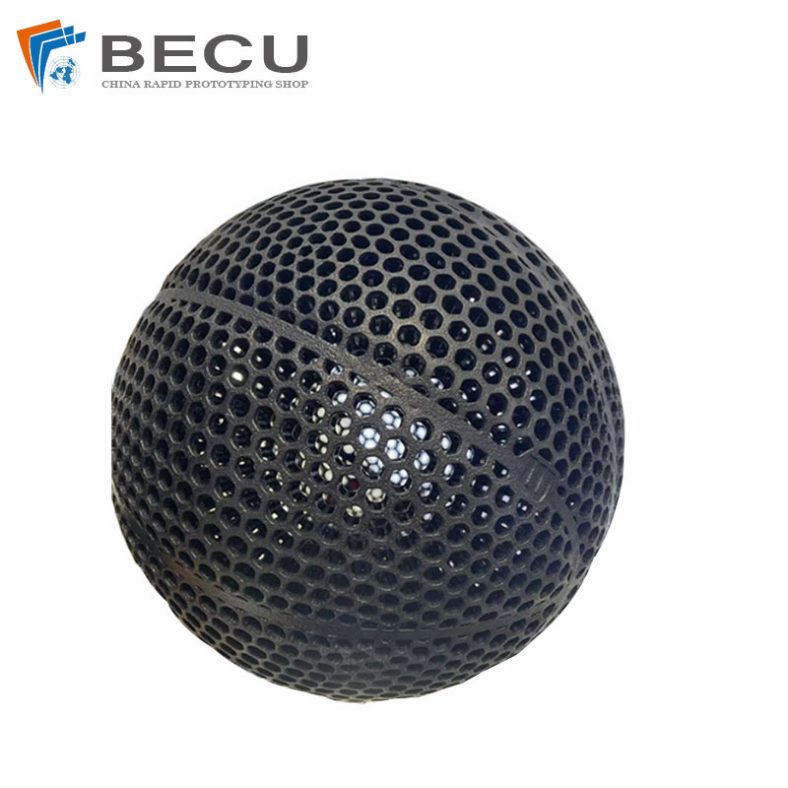
Nylon 3D Printed Size 5 Basketball
-
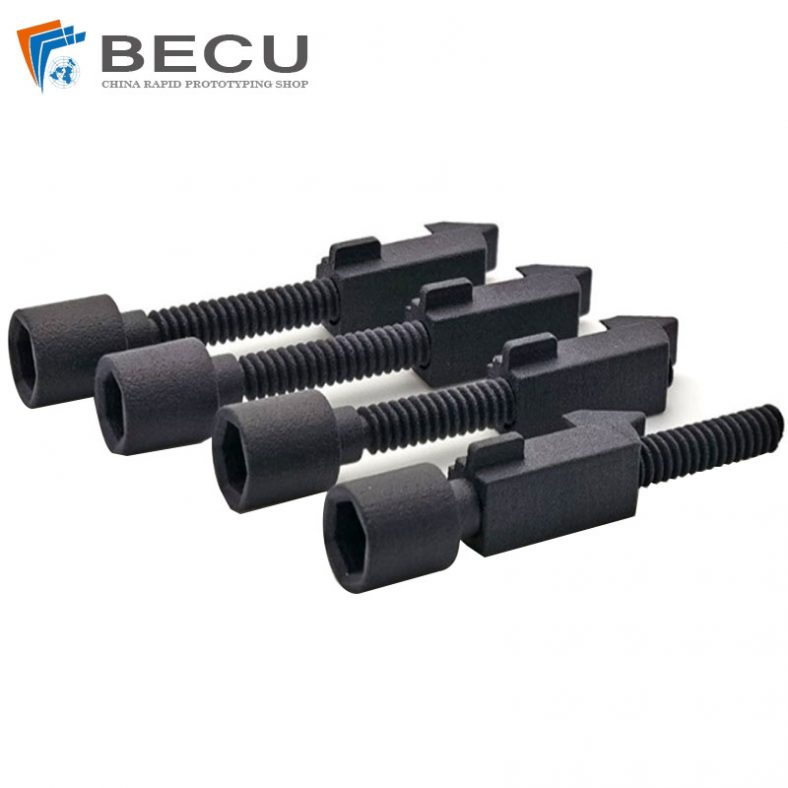
Black Nylon Medical Threaded Screw By MJF 3D Printing
-
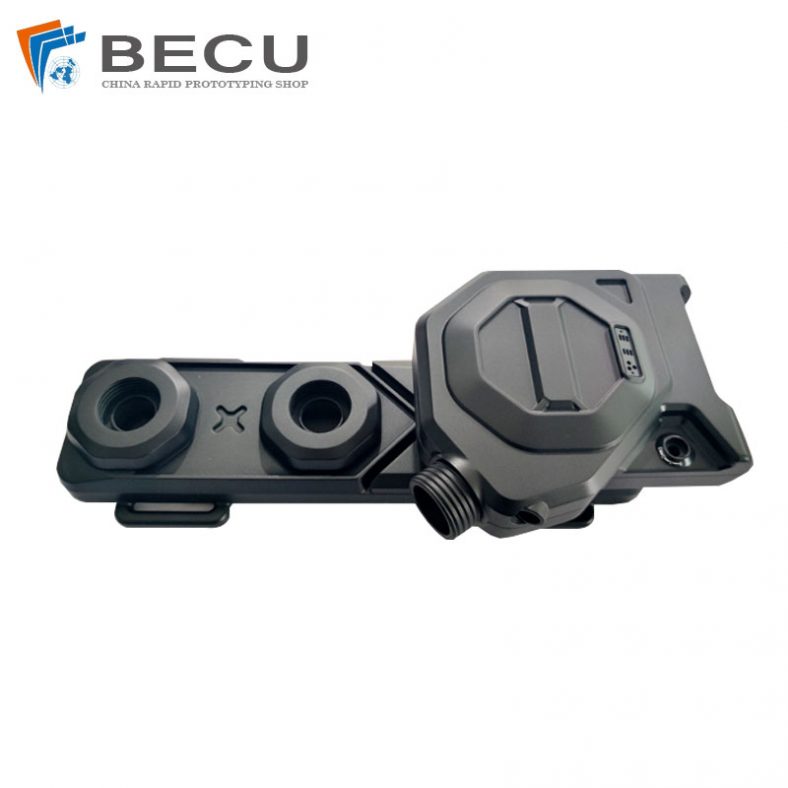
MJF 3D Printing Black Nylon Red Dot Sighting For Medical
-
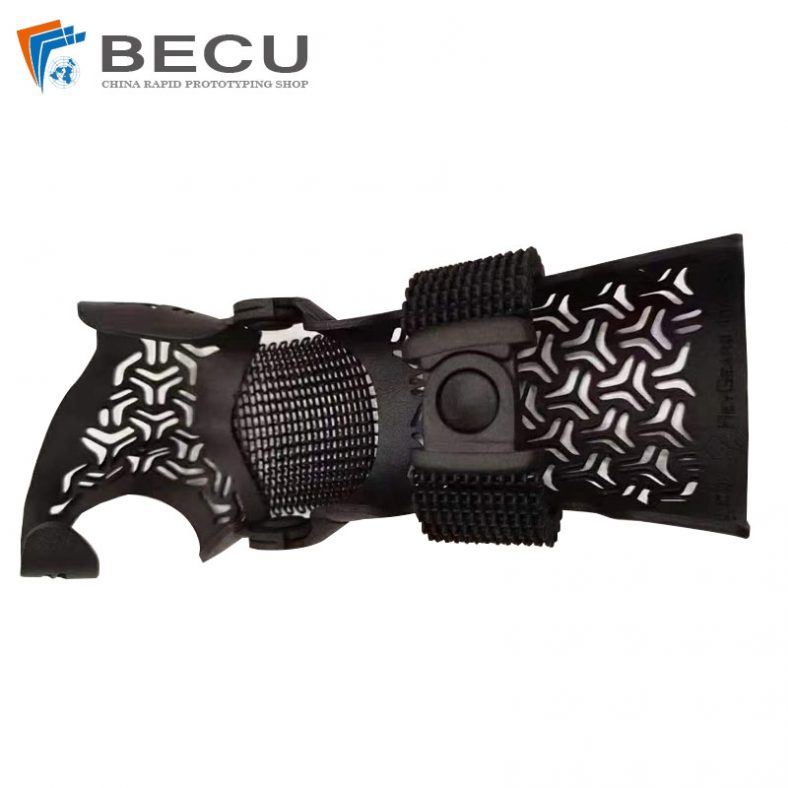
MJF 3D Printing Black Nylon Medical Arm Guards
-
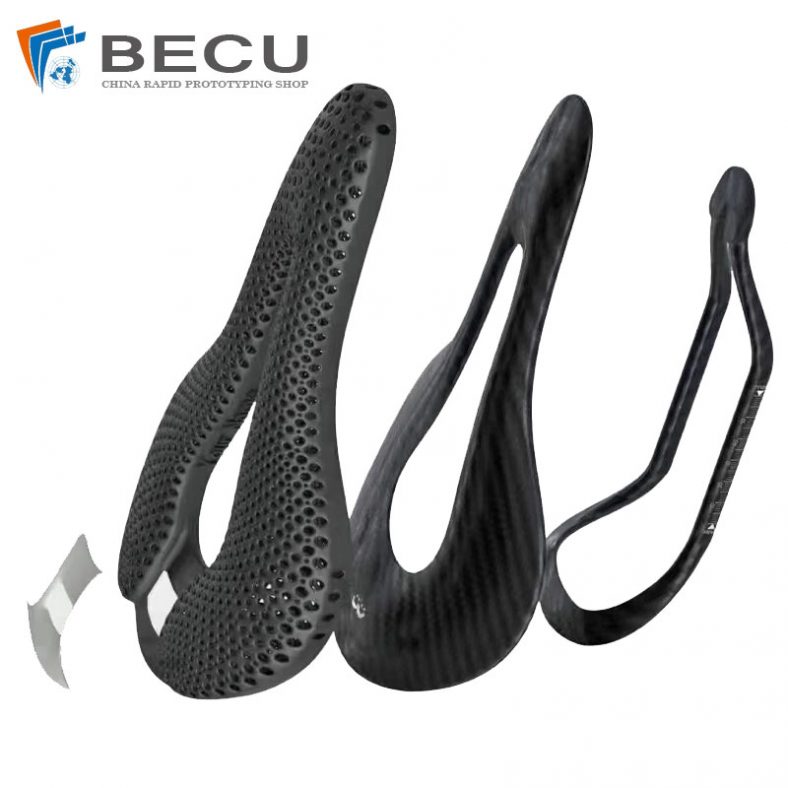
MJF 3D Printing Bicycle Honeycomb Saddle
-

Multi Jet Fusion Printed Nylon Plastic Parts
-
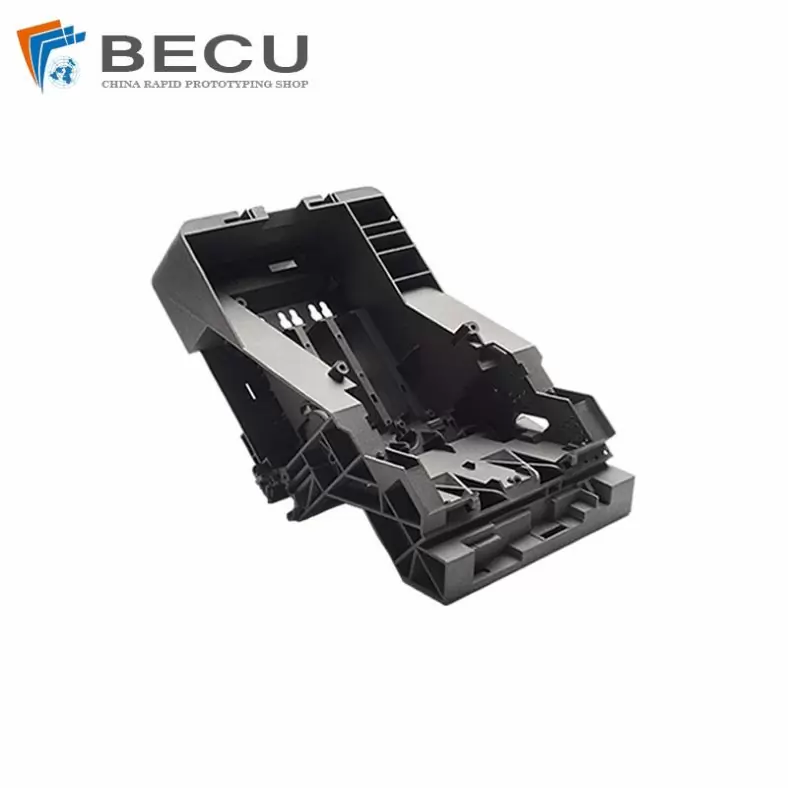
MJF 3D Printing Nylon 12 For Industrial Parts
The FAQs Of MJF 3D Printed Parts Vapor Smoothing
1.Does Vapor Smoothing Create a Hydrophobic Surface?
Vapor smoothing of MJF 3D printed parts can potentially create a hydrophobic surface, but it depends on several factors, including the material used, the specific solvent used for vapor smoothing, and the duration of the smoothing process.
- Material Type: Certain 3D printing materials used in MJF, such as ABS (Acrylonitrile Butadiene Styrene) and some variants of PLA (Polylactic Acid), have inherent hydrophobic properties. These materials naturally repel water to some extent, which means that even without vapor smoothing, the surface may already exhibit some level of hydrophobicity.
- Solvent Choice: The choice of solvent or chemical used during vapor smoothing can influence the final surface properties of the 3D printed part. Some solvents, like acetone, can slightly dissolve the surface of certain materials, creating a smoother and potentially more hydrophobic surface. Other solvents, like isopropyl alcohol (IPA) or ethyl acetate, may have a milder effect on the material and might not significantly change its hydrophobicity.
- Smoothing Duration: The duration of the vapor smoothing process can also affect the hydrophobicity of the surface. Longer exposure times to the vapor might lead to more pronounced changes in the surface properties, potentially increasing hydrophobicity.
It is important to note that while vapor smoothing can influence the surface characteristics of MJF 3D printed parts, it may not turn inherently hydrophilic materials into highly hydrophobic ones. The degree of hydrophobicity achieved through vapor smoothing is likely to be modest, and the resulting surface may not be as hydrophobic as surfaces treated with specialized hydrophobic coatings or post-processing techniques.
Furthermore, the hydrophobicity of a surface can also be influenced by other factors, such as the roughness of the surface, the presence of additives or fillers in the 3D printing material, and any secondary surface treatments like sanding or polishing.
If creating a highly hydrophobic surface is a critical requirement for a specific application, it may be more effective to explore specialized hydrophobic coatings or treatments designed explicitly for that purpose. These coatings are specifically engineered to impart strong hydrophobic properties to the surface and can be applied after the 3D printing process is complete.
In conclusion, while vapor smoothing of MJF 3D printed parts may contribute to some degree of hydrophobicity, it may not be the most effective method for achieving highly hydrophobic surfaces. It is essential to consider the specific material, solvent, and smoothing parameters to understand the impact on surface properties, including hydrophobicity, for a particular application.
2.Does Vapor Smoothing Increase Strength?
In some cases, vapor smoothing can facilitate the penetration of reinforcing agents, such as fibers or nanoparticles, into the part’s surface. These reinforcing agents can enhance the strength and toughness of the surface layer, contributing to an overall strength improvement.
While vapor smoothing can enhance the strength of the surface layers, it may not address or improve weaknesses introduced during the 3D printing process, such as anisotropic properties or layer adhesion. Additionally, the overall mechanical properties of the part, such as tensile strength and impact resistance, may still be influenced primarily by the 3D printing material and the specific manufacturing process.
However, the extent of the strength enhancement is limited to the outer layers, and the core mechanical properties of the part remain largely unaffected. To achieve more substantial strength improvements, a combination of appropriate material selection, post-processing techniques, and design optimization is necessary.
3.Vapor Smoothing for the Medical Industry – An Innovative Application
The medical industry is continually seeking innovative solutions to improve patient care, reduce costs, and enhance medical devices and equipment. Vapor smoothing, as a post-processing technique for 3D printed parts, has found promising applications in the medical field.
- Custom Medical Devices and Prosthetics:One of the most significant advantages of 3D printing in the medical industry is the ability to create customized medical devices and prosthetics tailored to individual patients’ needs. However, 3D printed parts often exhibit a rough surface finish, which may not be ideal for medical applications that require contact with sensitive tissues or the skin.
- Vapor smoothing can be applied to 3D printed medical devices and prosthetics to improve their surface finish, making them smoother and more comfortable for patients. For example, prosthetic limbs and orthotic braces can be vapor smoothed to achieve a polished appearance and reduce the risk of skin irritation or friction.
- Medical Implants and Surgical Guides:In recent years, 3D printing has revolutionized the production of patient-specific medical implants and surgical guides. These custom-made implants offer better fit and functionality, leading to improved surgical outcomes and faster patient recovery. Vapor smoothing can be employed to enhance the surface finish of 3D printed implants, reducing the risk of bacterial adhesion and promoting better biocompatibility.
- Additionally, surgical guides, used in procedures such as dental implantation or orthopedic surgery, can benefit from vapor smoothing to ensure smooth and precise contact with anatomical structures during surgery.
- Medical Models and Simulations:Vapor smoothing can also be applied to 3D printed medical models and simulations, which are valuable tools for surgical planning, medical education, and patient communication. Smoothing the surface of these models enhances their appearance and makes them more realistic, aiding medical professionals in better understanding anatomical structures and pathologies.
- Furthermore, vapor smoothing can help improve the durability of these models, allowing for repeated handling and use in medical training and simulation scenarios.
- Sterilization and Cleaning:The smooth surface achieved through vapor smoothing can simplify the sterilization and cleaning process of 3D printed medical devices and equipment. A smoother surface minimizes the risk of bacterial adhesion, making the parts easier to clean and disinfect thoroughly. This is especially critical for reusable medical devices and equipment used in clinical settings.
- Reduced Friction and Wear:In medical devices and equipment where moving parts come into contact, such as mechanical prosthetic components, friction and wear can be a concern. Vapor smoothing can help reduce friction between these parts, leading to smoother movement and potentially extending the life of the medical device.
- Ergonomics and Patient Comfort:Patient comfort is of paramount importance in the medical industry. Vapor smoothing can contribute to the overall ergonomics of medical devices and equipment by creating smooth, rounded edges and surfaces that minimize discomfort and pressure points.
- Regulatory Considerations:When using vapor smoothing for medical applications, it is crucial to consider regulatory requirements and standards specific to the medical industry. Medical devices and equipment must adhere to strict safety and quality guidelines, and any post-processing techniques, including vapor smoothing, should not compromise the integrity or functionality of the final product.
Vapor smoothing has emerged as an innovative application in the medical industry, offering valuable benefits for 3D printed medical devices, prosthetics, implants, models, and equipment. The improved surface finish achieved through vapor smoothing enhances patient comfort, improves surgical outcomes, facilitates cleaning and sterilization, and contributes to overall better patient care. As 3D printing technologies continue to advance, and more materials become compatible with vapor smoothing, its applications in the medical industry are expected to grow, further revolutionizing the field of medicine and patient treatment.
